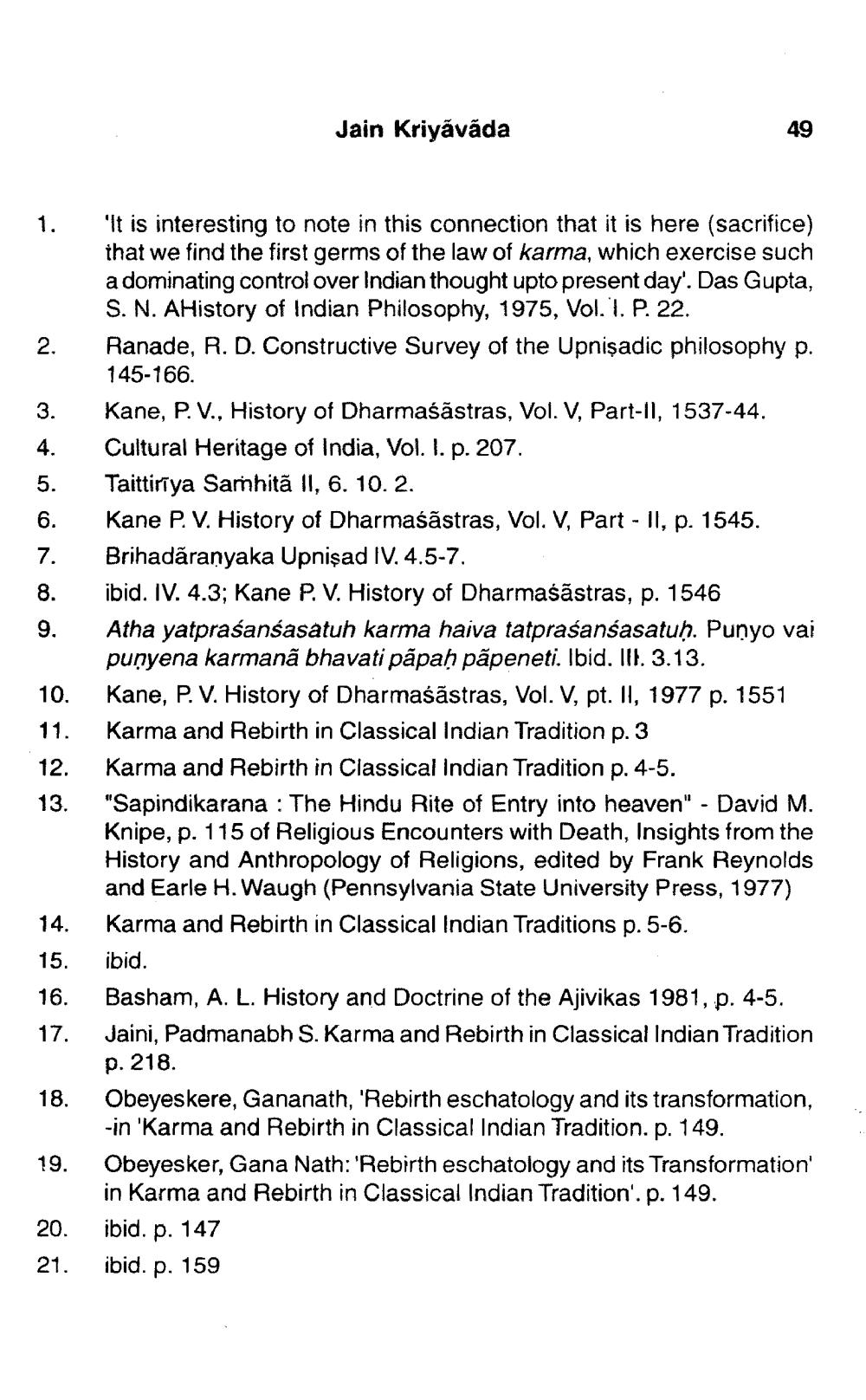________________
1.
2.
3.
4.
5.
6.
7.
8.
9.
10.
11.
12.
13.
14.
15.
16.
17.
18.
Jain Kriyǎväda
19.
49
'It is interesting to note in this connection that it is here (sacrifice) that we find the first germs of the law of karma, which exercise such a dominating control over Indian thought upto present day'. Das Gupta, S. N. AHistory of Indian Philosophy, 1975, Vol. I. P. 22.
Ranade, R. D. Constructive Survey of the Upnisadic philosophy p. 145-166.
Kane, P. V., History of Dharmasastras, Vol. V, Part-II, 1537-44. Cultural Heritage of India, Vol. I. p. 207.
Taittiriya Samhita II, 6. 10. 2.
-
Kane P. V. History of Dharmasastras, Vol. V, Part II, p. 1545. Brihadaranyaka Upnisad IV. 4.5-7.
ibid. IV. 4.3; Kane P. V. History of Dharmasastras, p. 1546
Atha yatprasanśasatuh karma haiva tatprasanśasatuḥ. Punyo vai puṇyena karmanã bhavati papaḥ pãpeneti. Ibid. III. 3.13.
Kane, P. V. History of Dharmasastras, Vol. V, pt. II, 1977 p. 1551 Karma and Rebirth in Classical Indian Tradition p. 3 Karma and Rebirth in Classical Indian Tradition p. 4-5.
"Sapindikarana : The Hindu Rite of Entry into heaven" - David M. Knipe, p. 115 of Religious Encounters with Death, Insights from the History and Anthropology of Religions, edited by Frank Reynolds and Earle H. Waugh (Pennsylvania State University Press, 1977) Karma and Rebirth in Classical Indian Traditions p. 5-6.
ibid.
Obeyeskere, Gananath, 'Rebirth eschatology and its transformation, -in 'Karma and Rebirth in Classical Indian Tradition. p. 149. Obeyesker, Gana Nath: 'Rebirth eschatology and its Transformation' in Karma and Rebirth in Classical Indian Tradition'. p. 149.
20.
ibid. p. 147
21. ibid. p. 159
Basham, A. L. History and Doctrine of the Ajivikas 1981, p. 4-5. Jaini, Padmanabh S. Karma and Rebirth in Classical Indian Tradition p. 218.




